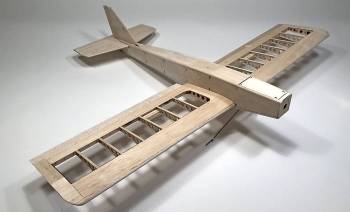Quickie 500 Kit
|
|
 |
But only from... Oldschool Model Works
All items from... Oldschool Model Works
The story behind the original "Quickie 500" dates back to 1971, when several members of the B.A.R.K.S. (Bakersfield Aircraft Radio Kontrol Society) approached one of their members (Glen Spickler) to see if he was interested in drawing up a one-design club racer. What the fellows wanted was a simple “40-size" airplane that would be economical to build and easy to fly. The idea sounded interesting, so out came the drawing board, paper, pencils, and a large-sized eraser.
A model for just one purpose has a limited appeal, so it seemed only sensible that the "Quickie" should also be capable of the everyday fun flying that the majority of Radio Control modelers enjoy. The success of this approach has been proven by the number of "Quickies" built by non-racing modelers who fly the ship in all types of club contests, decade after decade.
Don't let the fact that the "Quickie 500" was designed for racing dissuade you from building one. It's a rugged, easy-to-fly model that can do most of the stunt patterns and has the ability to slow down for landings, which will surprise you. It points well on the straight-away and has no tendency to snap roll in the corners. No matter how slowly you fly, the ailerons will show no tendency to reverse or quit working.
You can be sure that the "Quickie" is a well-proven design capable of giving many hours of pleasure, whether it be club racing or just barnstorming around. We certainly don't consider the "Quickie 500" a trainer, but anyone who has advanced to the aileron stage shouldn't have any problems with it. Give it a try; it's a fun airplane!
The "Quickie 500" is at its best when built as a club project. Try to get some of your friends to build them too. Then have a ball play racing or just have fun tearing up the sky!
Needed To Complete:
• 4 channel radio and servos
(We recommend Mini servos all around, although modifications can be made to use other sizes. In our prototypes we used Tactic TSX25's).
• Propeller
• Engine/Motor mount & mounting hardware
• “Y” servo harness (for ailerons)
• Pushrods (two 5” for ailerons, two 24” for elevator & rudder, one 10” for throttle if glow powered)
• Clevises for the pushrods (8 if electric, 10 if glow).
• Two 2.5” diameter main wheels
• 1 - tailwheel assembly (optional)
• If glow, tank and fuel tubing
• Covering - typically 2 rolls

|








